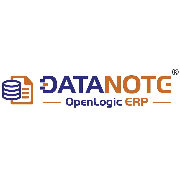ERP – Enterprise Resource Planning means enterprise-wide transaction processing software system. ERP should support:
An enterprise-wide set of management tools that balances demand and supply.
Containing the ability to link customers and suppliers into a complete supply chain.
Employing proven business processes for decision-making.
We are providing high degrees of cross-functional integration among sales, marketing, manufacturing operations, logistics, purchasing, finance, new product development, and human resources.
Enabling people to run their business with high levels of customer service and productivity, and simultaneously lower costs and inventories, and providing the foundation for effective e-commer...
ERP – Enterprise Resource Planning means enterprise-wide transaction processing software system. ERP should support:
An enterprise-wide set of management tools that balances demand and supply.
Containing the ability to link customers and suppliers into a complete supply chain.
Employing proven business processes for decision-making.
We are providing high degrees of cross-functional integration among sales, marketing, manufacturing operations, logistics, purchasing, finance, new product development, and human resources.
Enabling people to run their business with high levels of customer service and productivity, and simultaneously lower costs and inventories, and providing the foundation for effective e-commerce.
Enterprise Resource Planning is a purchasing department generating enormous cost reductions while at the same time increasing its ability to truly partner with its suppliers. The purchasing director claimed: “For the first time ever, we have a good handle on our future requirements for components raw and materials. When our customer demand changes, we—ourselves and our suppliers—can manage changes to our schedules on a very coordinated and controlled basis. I don’t see how any company can do effective supply chain management without ERP.”
ERP began life in the 1960s as Material Requirements Planning (MRP), an outgrowth of early efforts in the bill of material processing. MRP’s inventors were looking for a better method of ordering materials and components, and they found it in this technique. The logic of material requirements planning asks the following questions:
What are we going to make?
What does it take to make it?
What do we have?
What do we have to get?
This is called the universal manufacturing equation. Material Requirements Planning simulates the universal manufacturing equation. It uses the master schedule (What are we going to make?), the bill of material (What does it take to make it?), and inventory records (What do we have?) to determine future requirements (What do we have to get?).
MANUFACTURING RESOURCE PLANNING (MRP II) — A method for the effective planning of all resources of a manufacturing company. Ideally, it addresses operational planning in units, and financial planning in currency, and has a simulation capability to answer “what-if” questions. It comprises various functions, each linked together: business planning, sales and operations planning, production planning, master scheduling, material requirements planning, capacity requirements planning, and the execution support systems for capacity and material. The output from these systems is integrated with financial reports such as the business plan, purchase commitment report, shipping budget, and inventory projections in dollars. Manufacturing resource planning is a direct outgrowth and extension of closed-loop MRP.
The fundamentals of ERP are the same as with MRP II. However, thanks in large measure to enterprise software, ERP as a set of business processes is broader in scope, and more effective in dealing with multiple business units. Financial integration is even stronger. Supply chain tools, supporting business across company boundaries, are more robust. Let’s now look at a complete definition of ERP, ENTERPRISE RESOURCE PLANNING (ERP) predicts and balances demand and supply. It is an enterprise-wide set of forecasting, planning, and scheduling tools, which:
Links, customers and suppliers into a complete supply chain
Its goals include high levels of customer service, productivity, cost reduction, and inventory turnover, and it provides the foundation for effective supply chain management and e-commerce. It does this by developing plans and schedules so that the right resources—manpower, materials, machinery, and money—are available in the right amount when needed. Enterprise Resource Planning is a direct outgrowth and extension of Manufacturing Resource Planning and, as such, includes all of MRP II’s capabilities.
ERP is more powerful in that it: a) applies a single set of resource planning tools across the entire enterprise, b) provides real-time integration of sales, operating, and financial data, and c) connects resource planning approaches to the extended supply chain of customers and suppliers. The primary purpose of implementing Enterprise Resource Planning is to run the business, in a rapidly changing and highly competitive environment, far better than before. How to make that happen is what this book is all about. THE APPLICABILITY OF ERP and its predecessor, MRP II, have been successfully implemented in companies with the following characteristics:
This Blog is Already Published in https://www.datanote.in/knowledge/blog/importance-of-mrp-planning-in-an-organization
Contact No: +91 97370 45567
Email: info@safal.dev



